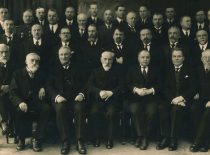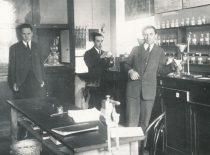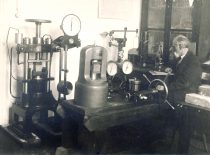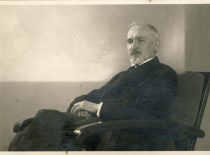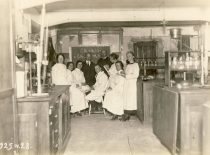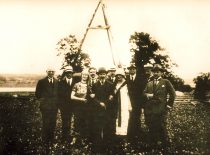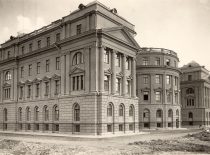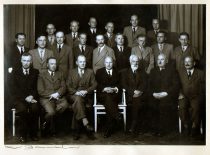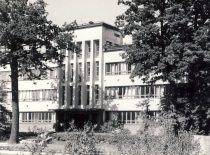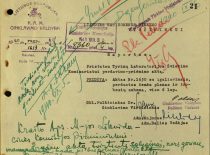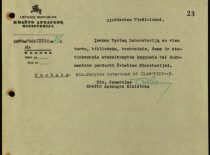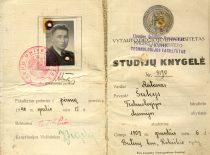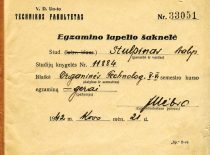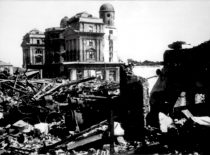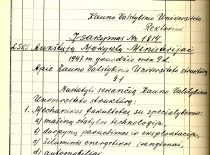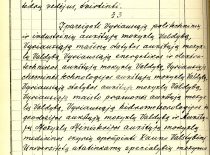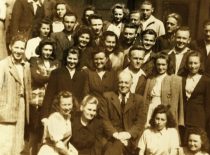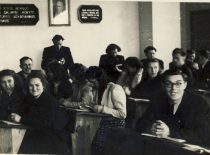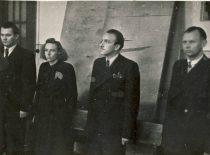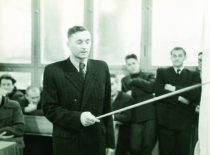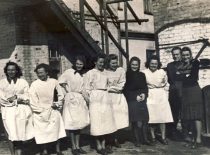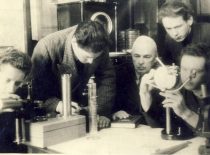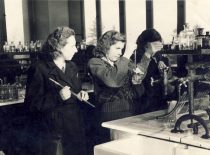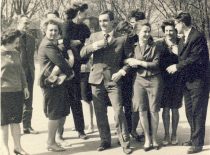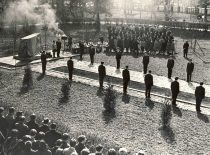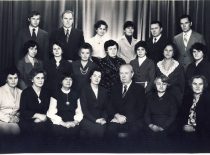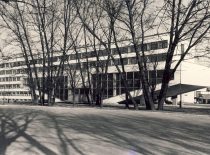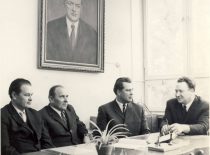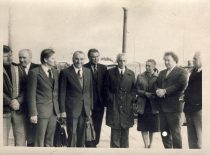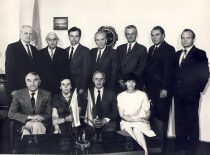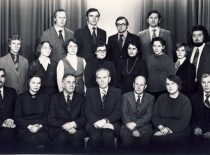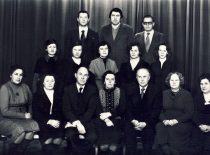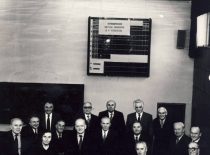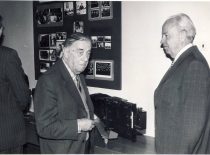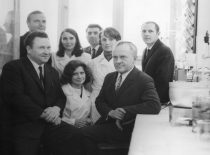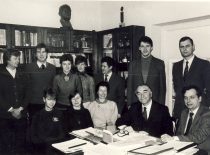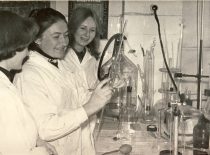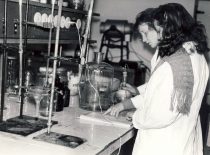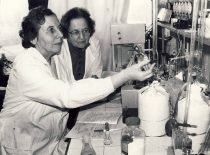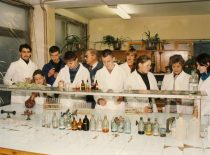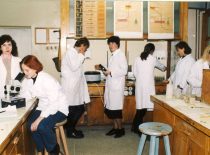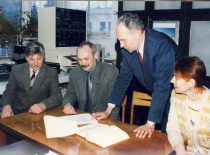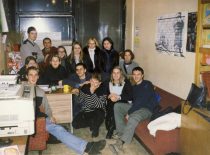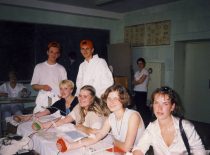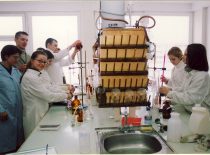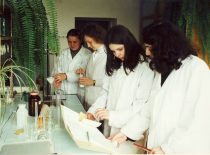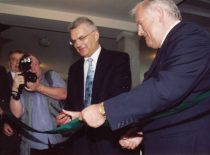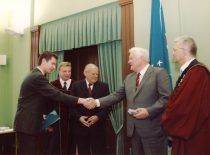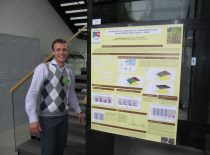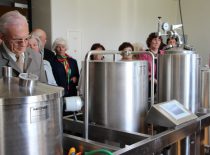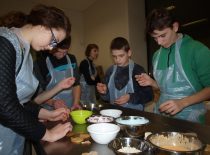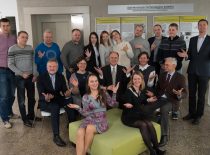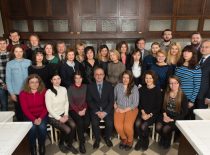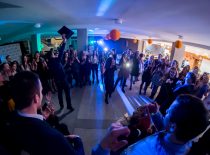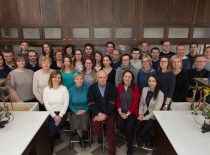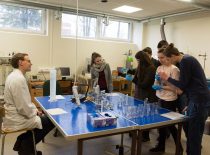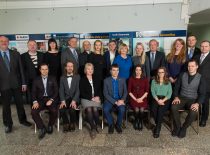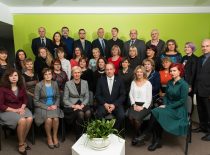KTU Faculty of Chemical Technology – 70
9 December 2017 marks the 70th anniversary of the establishment of the Faculty of Chemical Technology. KTU Museum congratulates the faculty’s community on this honourable occasion and presents a virtual exhibition “70th Anniversary of the Faculty of Chemical Technology”. The exhibition displays the fragments of the faculty’s history and reminds the persons who transferred their knowledge and provided possibilities for continuation of their work. The exhibition consists of 3 parts reflecting various historical periods of the faculty. The first part “Origins: studies of chemistry in Kaunas 1922–1947” reveals the merits of the teachers of the University of Lithuania in the area of chemical science and shows a complicated history of the University. The second part “Establishment of the Faculty of Chemical Technology and its Activities in 1947–1990” introduces the faculty’s activities during the period of the Soviet occupation. The third part “Maturity: Faculty’s Activities in the Independent Lithuania” shows the faculty’s life after the restoration of independence in Lithuania. The exhibition presents photographs and documents from the funds of KTU Museum and Vytautas the Great War Museum, Office of the Chief Archivist of Lithuania and albums of the Faculty of Chemical Technology. The exhibition also displays photographs from the personal archives of the graduate of the Faculty of Chemical Technology, signatory of the Act of Independence of 11 March Algirdas Patackas, prof. Romualdas Baltrušis and prof. Marijonas Martynaitis family archives.
Origins: studies of chemistry in Kaunas 1922–1947
Studies of chemical technology began at the Technical Faculty and Faculty of Mathematics and Natural Sciences of University of Lithuania in 1922. The Technical Faculty was preparing the engineers of chemical technology while the Faculty of Mathematics and Natural Sciences – teachers. By 1940, only 15 engineers of chemical technology graduated from the Technical Faculty, because this speciality was not popular due to the poor development of chemical industry. Technical Faculty had the Department of Organic Chemistry (Head prof. Jonas Šimkus) and Department of Inorganic Technology (Head – prof. Pranas Jodelė). Faculty of Mathematics and Natural Sciences had Departments of Inorganic and Analytical Chemistry (Head – prof. Pilypas Butkevičius), Organic Chemistry (Head – prof. Antanas Purėnas) and Physical Chemistry (Head – prof. Vincas Čepinskis). These lecturers were the pioneers of chemistry science in Lithuania. They wrote textbooks in Lithuanian language and created Lithuanian terms. With the change of status in 1930, the University was renamed Vytautas Magnus University. After the Soviet occupation, the University was renamed the University of Kaunas in August 1940. The Faculty of Theology and Philosophy was revoked, the Faculty of Mathematics and Natural Sciences was relocated to Vilnius University and the Technical Faculty was divided into the faculties of Construction and Technology. When invaders were destroying the Lithuanian army, at the initiative of col. Juozas Vėbra, the Military Research Laboratory was transferred to the University of Kaunas; The Faculty of Technology, including the Division of Chemical Technology, was located there. After the beginning of the war between Germany and the Soviet Union, the University’s students and lecturers organised an uprising against the Russian army on 22 June 1941, and announced the restoration of the independence of Lithuania, but it went against the German plans. The uprising involved active participation Assoc. prof. Adolfas Damušis and col. assoc. prof. Juozas Vėbra were active participants of the uprising, and Research Laboratory became the place of meetings for the rebels. Lecturers and students were active participants of the anti-Nazi resistance.
Establishment of the Faculty of Chemical technology and its activities in 1947–1990
By the order of the Minister of Higher Education of SSSR of 9 December 1947, Technological Faculty of the State University of Kaunas was reorganised into the Faculties of Electrotechnics, Mechanics and Chemical Technology. At the end of 1950, the University was reorganised into Kaunas Polytechnic Institute (hereinafter – KPI) and its Faculty of Medicine into Kaunas Medical Institute. KPI Faculty of Chemical Technology had 6 departments, later – 7 and their names were changed numerous times. New chamber of the Faculty of Chemical Technology and block of laboratories were built in 1970–1975 (architect V. Dičius). With increasing public awareness of the country’s ecological problems, Department of Engineering Ecology was established at the faculty in 1988. The spirit of the independent Lithuania remained present at the faculty during the years of the Soviet occupation. KPI students demonstrated anti-Soviet spirit: they were singing anti-Soviet songs, criticised Soviet system, destroyed Soviet monuments.
Student of the Faculty of Chemical technology Algirdas Patackas and his friend from another faculty Algis Petrauskas had an idea to paint the monument for the members of the young communist league, who died in the fight for the Soviet authorities in Lithuania, built in the faculty’s territory in 1963. During the mid-studies celebration A. Patackas secretly painted the monument in the colours of the Lithuanian flag and painted the Pillars of Gediminas using fuel oil. It caused a significant reaction: people were trying to wash the monument using various chemicals for several months, but nobody knew who committed this offence. The truth was revealed after regaining of the independence, when signatory of the Act of Independence of 11 March A. Patackas admitted that he had painted the Soviet monument.
Maturity: faculty’s activities in the independent Lithuania
Kaunas Polytechnic Institute was renamed Kaunas University of Technology on 31 October 1990. On 12 December 1990, KTU became the first Lithuanian university to begin using two cycle study system. Institute of Synthetic Chemistry was established in 2005, in 2010 a modern Food Science and Technology Competence Centre was equipped using the funds of Faculty and EU Cohesion Fund; it employs experienced scientists and technologists of food science field. Currently Faculty of Chemical Technology consists of 6 departments, Institute of Synthetic Chemistry and Food Science and Technology Competence Centre. New traditions were created at Kaunas University of Technology: in 1998, an oak park was planted near the Faculty of Chemical Technology for the 80 anniversary of the re-establishment of the state of Lithuania. On 26 October of the same year, a sculpture of the oak acorn (by a sculptor R. Antinis) was opened there for commemoration of the Day of the Lithuanian Constitution and Magna Charta of the European Universities. Sundial of the human shadow was opened by the faculty in 2009 to commemorate the thousand year anniversary of the name of Lithuania. Student union of the Faculty of Chemical Technology “Vivat Chemija”, established in 1992, preserves old traditions and creates new ones: they organise freshmen christening, “Days of Chemists”, conduct various social projects.


